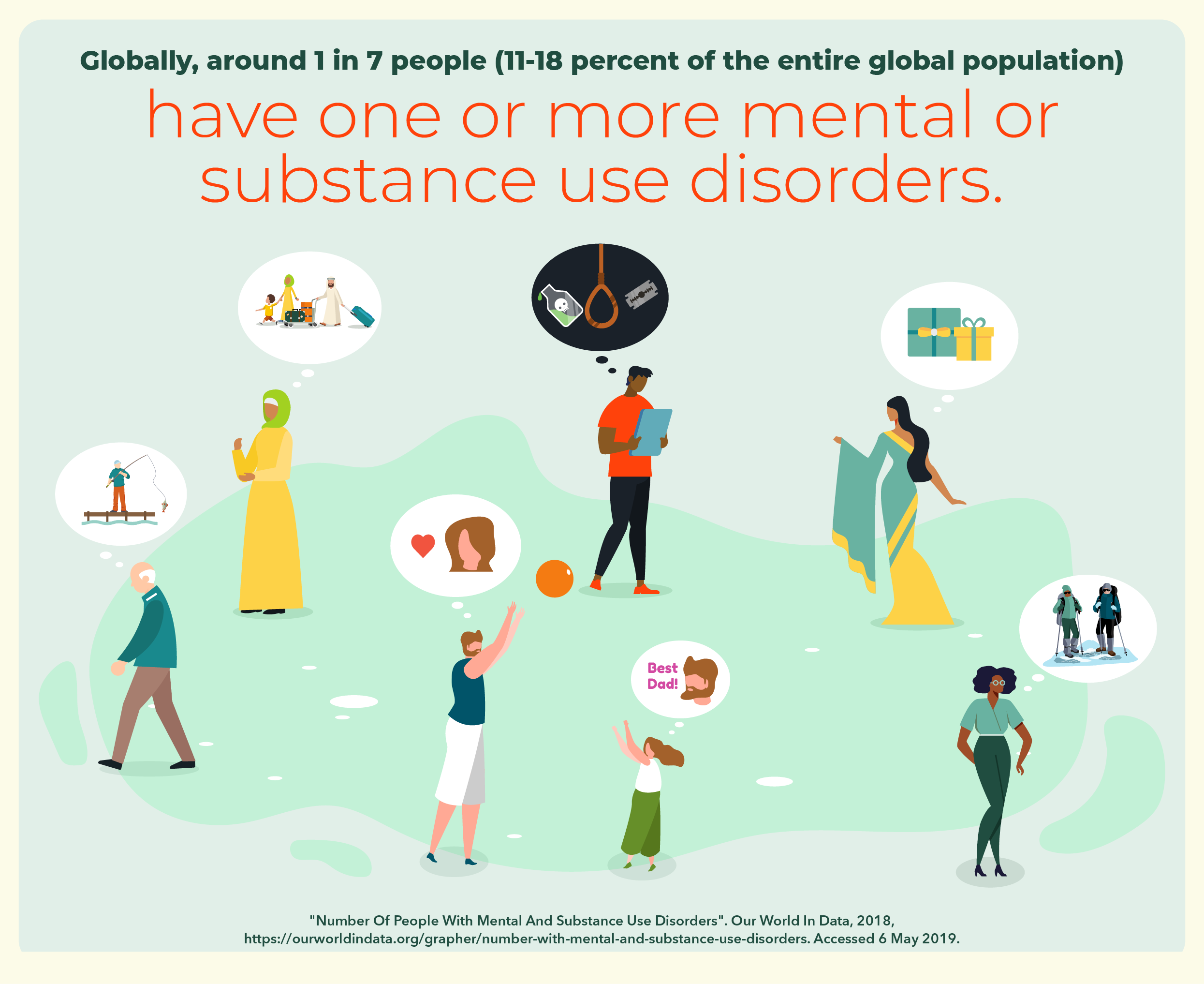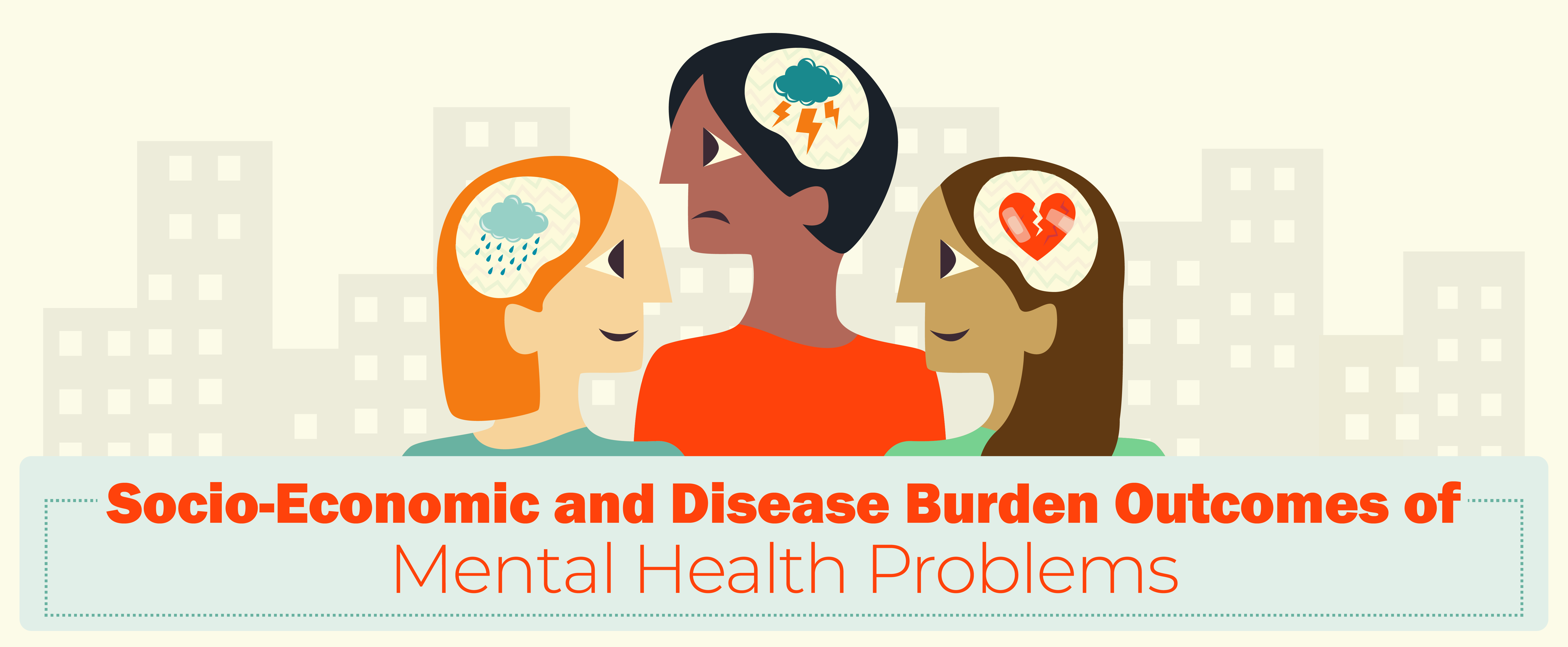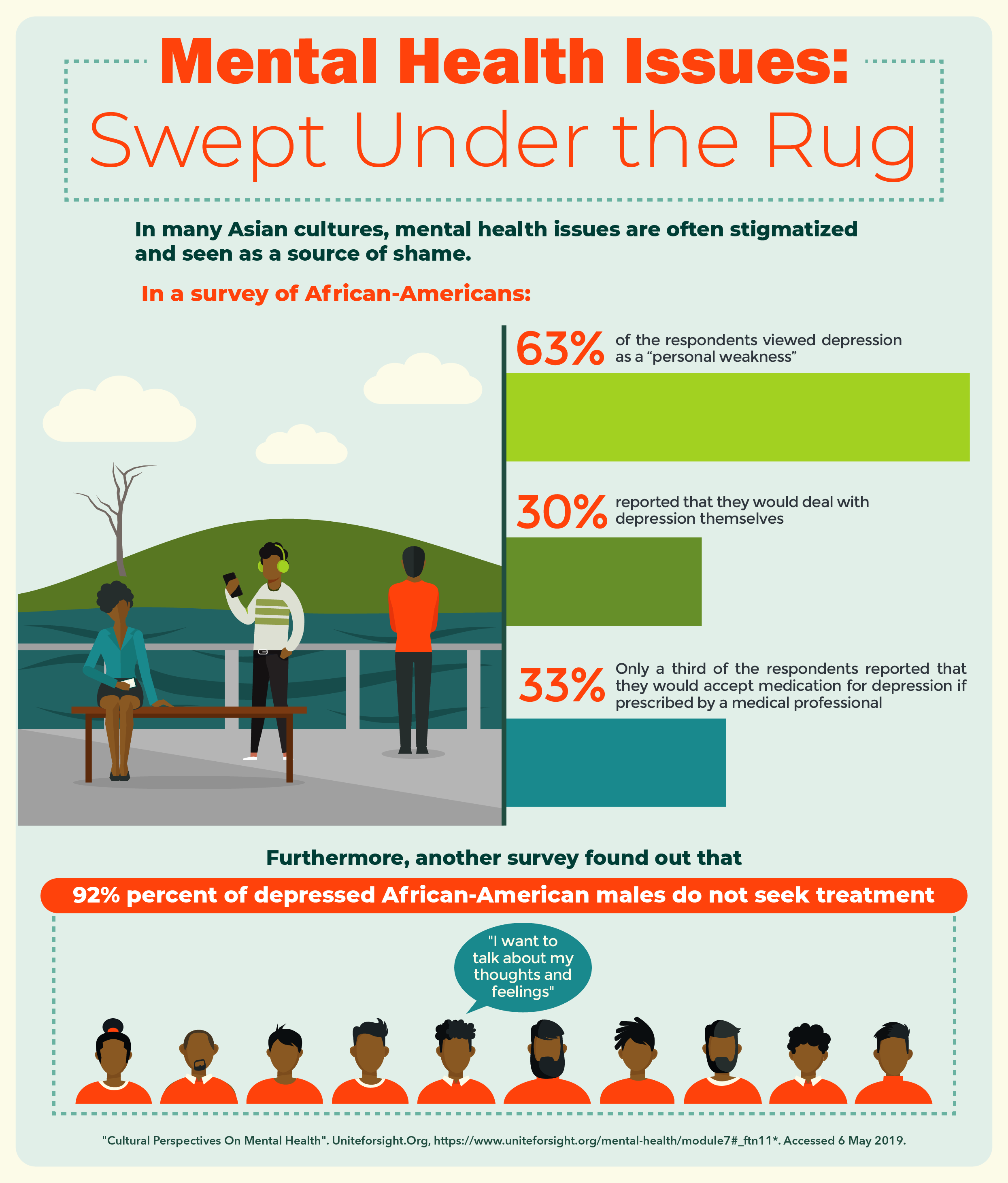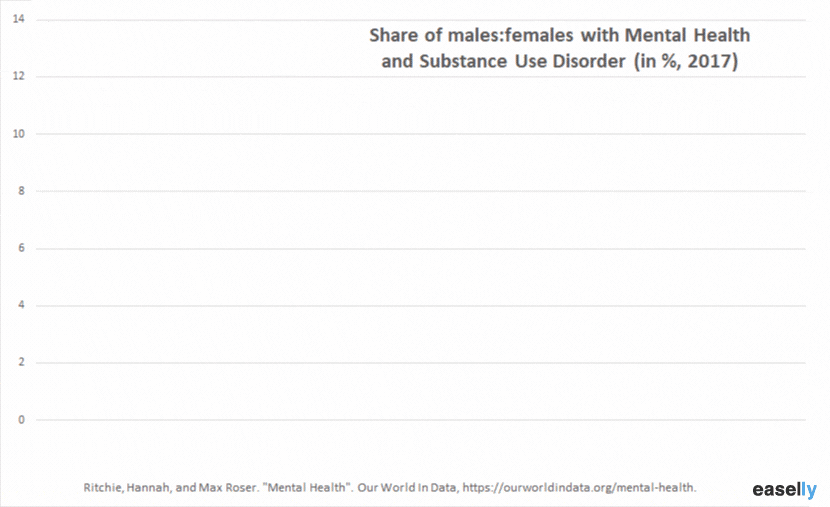In honor of Mental Health Awareness Month this May, we’re highlighting recent figures and findings on mental health and substance abuse in an infographic.
There’s no arguing that the modern world and the wonders that come with it has brought so much boon to humanity.
Finding a Friday night date is just one tap away, you can talk with your family in an instant who live thousands of miles away from you, and you can even get paid to work at home in your pajamas.
However, the comforts and conveniences of the modern world is a powerful force behind the growing number of people who feel alienated, lonely, or inadequate.
Modernity may have brought us closer together, but it has also kept us apart.
What are mental health and substance abuse disorders costing us?
This case study (plus an infographic!) takes a closer look at the latest figures that we can find on the prevalence of mental health disorders including substance abuse, disease burden rates, and economic impact across the mental health disorder spectrum.
Social psychologists believe that certain features of modernity: secularism, individualism, the media, meritocracy, perfectibility, and romanticism — are significant contributors to the growing number of mental health issues plaguing not just a specific country, but around 1- in-7 people globally or 11 to 18 percent of the total global population.

It’s worth noting that the mental health issues covered in this definition are mental health disorders (depression, anxiety, bipolar, eating disorders and schizophrenia) and substance use (alcohol and drug use disorders).
The World Health Organization category of ‘mental disorders’ also covers neurodevelopmental disorders, including autism, attention-deficit hyperactivity disorders (ADHD), and developmental disability.
Swept under the rug
In many cultures around the world, mental health issues remains a taboo.
While a growing number of people are talking openly about mental health in some countries, it remains an issue that is swept under the rug for the most part.
In Asia, where many cultures value “conformity to norms, emotional self-control, and family recognition through achievement”, mental illnesses are often stigmatized and seen as a source of shame.
Meanwhile, approximately 63 percent of African Americans viewed depression as a “personal weakness”, 30 percent reported that they would deal with depression themselves, and only one- third reported that they would accept medication for depression if prescribed by a medical professional. In addition, 92 percent of depressed African-American males do not seek treatment.
A snapshot of global mental health issue prevalence: Poorly measured and understood
Due to the stigma associated with mental health issues and substance abuse, an accurate picture of the prevalence of mental health disorders globally remains poorly measured. It’s not uncommon for mental health issues to be underreported and under-diagnosed.
As a result, current diagnostic statistics alone won’t bring us closer to accurate figures. Plus, there is less attention and treatment for mental health disorders in countries with lower incomes.
Number of people with mental and substance abuse disorders, World
Prevalence by mental and substance use disorder 2017, World
Women are more likely to suffer from mental health issues — depression, anxiety, bipolar and eating disorders, but substance abuse and alcohol dependency is higher in men.
The prevalence of mental health and substance abuse disorders is approximately the same as 26 years ago but there’s been a slow but steady rise of depression among teenagers in the United States.
Socio-economic and disease durden outcomes of mental health problems
The costs of mental health problems aren’t confined to the stress, fatigue, and reduced quality of life experienced by sufferers. Anxiety, depression, substance abuse, and similar mental health issues can also have an impact on society and the economy on a global scale.

- Depression is a common mental disorder. Globally, more than 300 million people of all ages suffer from depression. Depression is the leading cause of disability worldwide, and is a major contributor to the overall global burden of disease.
- $51 billion – amount that depression costs US employers in lost productivity.
- Serious mental illness costs America $193.2 billion in lost earnings per year.
- 25 years – average loss in life expectancy for US adults with a serious mental illness
- 92 percent – Percent of suicide victims that suffered from a mental illness in the US.
- In 2010, mental and substance use disorders constituted 10.4% of the global burden of disease and were the leading cause of years lived with disability among all disease groups.
- Individuals living with serious mental illness face an increased risk of having chronic medical conditions.
- Over one-third (37%) of students with a mental health condition age 14–21 and older who are served by special education drop out — the highest dropout rate of any disability group in the U.S
- Each day an estimated 18-22 U.S. veterans die by suicide.
- A single extra poor mental health day in a month was associated with a 1.84 percent drop in the per capita real income growth rate in the U.S., resulting in $53 billion less total income each year.
- A poor mental health day in rural counties was associated with a reduction of 2.3 percent in income growth, compared with only a .87 percent reduction in urban counties. Poor mental health days refer to days when people describe their mental health as not good and could include conditions such as depression, anxiety, stress and problems with emotions. The measure does not include diagnosed mental illnesses.
- Mental health is leading cause of disease burden for females and the third leading cause for males.
- Mental health and substance use disorders are the leading causes of disease burden in the US.
Sources:
- “Depression”. Who.Int, 2018, https://www.who.int/news-room/fact-sheets/detail/depression.
- Trautmann, Sebastian et al. “The economic costs of mental disorders: Do our societies react appropriately to the burden of mental disorders?.” EMBO reports vol. 17,9(2016): 1245-9. doi:10.15252/embr.201642951
-
“The Effect Of Mental Illness On U.S. County Economic Growth | The Review Of Regional Studies”. Journal.Srsa.Org, 2018, http://journal.srsa.org/ojs/index.php/RRS/article/view/900
- “MENTAL HEALTH DISORDER STATISTICS – Statistic Brain.” Center for Disease Control, The Kim Foundation, National Alliance on Mental Illness, National Institute of Mental Health, publishing as Statistic Brain. SEPTEMBER 6, 2017 https://www.statisticbrain.com/mental-health-disorder-statistics/
- “DEPRESSION STATISTICS – Statistic Brain.” US Census Bureau, Center for Disease Control and Prevention, publishing as Statistic Brain. APRIL 6, 2017 https://www.statisticbrain.com/depression-statistics/
Feel free to use the infographic or let our design service team make one for you. We will be also be uploading this infographic in our infographic template library so you can reuse it asap!


